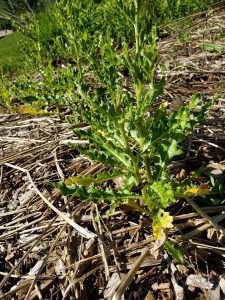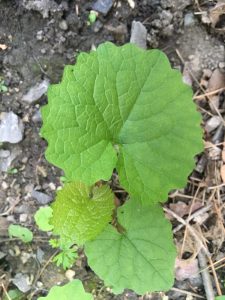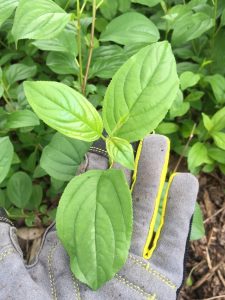Learn to identify invasive plants!
Invasive plants are undesirable because they put local biodiversity at risk, negatively affecting native plants, wildlife, and their habitats. They do so by out competing native plants and altering natural areas because:
- They are usually the first plants growing leaves after the winter and the last plants with green leaves in the fall.
- They can thrive in poor or dry soil.
- They can grow faster than other plants, which means they can get more sunlight and nutrients.
- They spread very quickly and easily.
As a result, it is important to control their spread as much as possible. They also interfere with agriculture and forest regeneration, and often force costly restoration efforts due to their rapid spread (for more information, check out Ontario Invasive Plant Council).
Follow us to learn more!
Did you know that despite its name, Canada Thistle is actually from Europe? Or that Garlic Mustard is considered one of Ontario’s most aggressive forest invaders, displacing native wildflowers like trilliums? This month, follow along on Twitter and Facebook to learn about invasive plants that can be found in gardens, neighbourhoods, and natural areas. We’ll share some facts and photos of common ones like Canada Thistle, Garlic Mustard, and Common Buckthorn (see photos below), which we have come across in our Wildflower and Medicine Wheel gardens at the Trafalgar campus.



Photos from left to right: Canada Thistle, Garlic Mustard, Common Buckthorn (photos by: Alison Feist; Credit Valley Conservation; and Andreea Bosorogan).
You can also help track these species so that the province can control their spread and be aware of where they have been spotted at EDDMapS Ontario– Early Detection and Distribution Mapping System.
It is important that we maintain biodiversity so that local ecosystems can continue to thrive and contribute to the wellbeing of humans and the planet. Ensuring we remove invasive plants can help native plants thrive and support important processes, like attracting pollinators (who work hard to fertilize our food), which contributes to earth’s natural processes!
Connect with us on social media or missionzero@sheridancollege.ca to share what you’ve been able to identify this summer!


Follow Us!